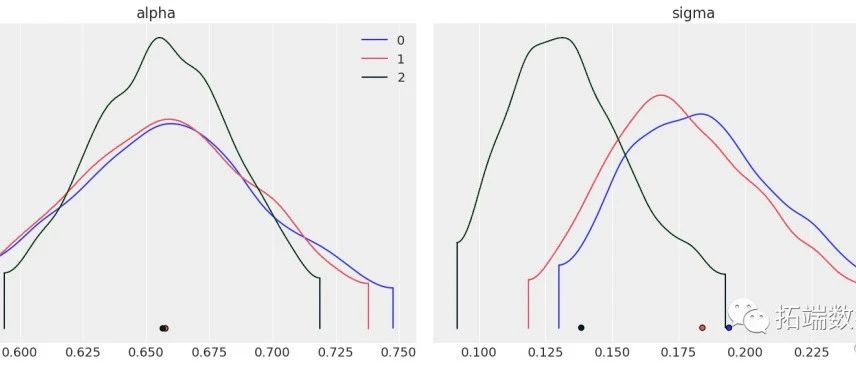sql脚本变量默认值
我有一个脚本文件,例如test.sql。我想在sqlcmd模式下使用:r test.sql从另一个脚本调用它,比方说caller.sql。这很好用,但我想在test.sql中使用脚本变量。当我从caller.sql调用test.sql时,我可以设置脚本变量,一切都很正常。但是,我希望使用脚本值的默认值,以便如果调用者没有设置变量,或者如果我直接(不是从caller.sql)运行test.sql,则脚本变量将默认为设置值。
我尝试过像这样的东西
begin try
select '$(grip)'
select 'grip value was found'
end try
begin catch
select 'grip value was missing'
end catch但我只得到了以下消息:发生了致命的脚本错误。未定义变量夹点。
我需要在test.sql中做些什么,这样它才能处理被调用者传递或不被传递的“grip”?我使用的是MS SQL 2005
回答 5
Stack Overflow用户
发布于 2011-12-13 06:38:07
有一个有限的解决方法(我只在SS2008R2上测试过它):
简单版本-如果您愿意不使用:on error exit / sqlcmd.exe -b
:on error ignore -- Ensures that sqlcmd.exe will not fail when referencing an undefined scripting variable. Remove this if you want your script to work in SSMS in regular mode, too.
Declare @valueOrDefault as nvarchar(max)= N'$(value)';
if @valueOrDefault = N'$' + N'(value)' set @valueOrDefault = N'default value'; -- Test if there is a value and, if not, assign a default; note the splitting of the reference string to avoid expansion.
-- use @valueOrDefault from now on注意:
- 由于T-SQL变量不能跨批处理工作,因此您不能启动另一个批处理(使用GO),因此不能切换到使用
:on error exit进行健壮的错误处理。因此,您必须在脚本的其余部分进行自己的错误处理-这不是微不足道的;请参阅SQL Server - stop or break execution of a SQL script - If删除
:on error ignore为了使脚本在常规模式下在SSMS中工作,请确保在使用sqlcmd.exe调用该脚本时未指定-b选项,因为如果引用的脚本变量不存在,则会阻止整个脚本运行。 - 通过将脚本变量有效地转换为常规T-SQL变量,您不能在T-SQL需要文字的位置使用该值,例如CREATE database语句中的数据库名称。
- 如果未定义脚本变量,则会将以下警告输出到stderr:'variableName‘脚本变量未定义。
健壮的版本-更麻烦,但支持:on error exit,这是明智的:
-- Store the default value in the context info (session-level storage accessible across batches that holds up to 128 bytes).
declare @binDefaultValue varbinary(128)= CAST(N'default value' AS varbinary(128));
set CONTEXT_INFO @binDefaultValue;
go -- Make the set CONTEXT_INFO statement take effect.
-- If the scripting variable has a value, store ITS value in the context info instead.
:on error ignore -- Temporarily ignore errors so that accessing a non-existent scripting variable doesn't abort the entire script.
declare @value as nvarchar(max) = N'$(value)'; -- Try to access the scripting variable; thanks to :on error ignore this will only give a warning.
if @value <> N'$' + N'(value)' -- Test if there is a value; note the splitting of the reference string to avoid expansion.
begin
-- We have a scripting-variable value: Store it in the context info (replacing the default value).
declare @binValue as varbinary(128) = cast(@value as varbinary(128));
set CONTEXT_INFO @binValue;
end
go -- End batch here, so we can switch back to :on error exit (requires a new batch).
:on error exit -- New batch: switch back to robust error handling.
-- End the batch here, so that SSMS in *regular* mode - which will fail on the line above - continues processing below.
-- Note that when run by sqlcmd.exe the subsequent batches will inherit :on error exit.
go
-- Retrieve the value or default value from the context info...
declare @valueOrDefault as nvarchar(max) = convert(nvarchar(max), CONTEXT_INFO(), 0);
-- ... and remove trailing null characters. ?? Is there an easier way to do this?
declare @pos as int = 0;
while @pos < LEN(@valueOrDefault)
begin
set @pos=@pos+1
if UNICODE(substring(@valueOrDefault, @pos, 1)) = 0 break;
end
if @pos > 0 set @valueOrDefault = left(@valueOrDefault, @pos - 1);
-- @valueOrDefault now contains the scripting-variable value or default value.
print 'Value or default value: [' + @valueOrDefault + ']';注意:
sqlcmd.exe当从sqlcmd.exe调用时,以及在常规模式下的SSMS中都可以工作-假设您没有在脚本中使用其他
- 命令。遗憾的是,SQLCMD模式中的SSMS总是拒绝运行引用了不存在的脚本的脚本,因此需要使用
SET CONTEXT_INFO,因为值需要跨批处理边界传递,这不能用T- variable. - The变量来完成。要切换回健壮的错误,需要多个批处理。上面的handling.
- The代码只支持一个脚本变量,并且由于使用了
SET CONTEXT_INFO,它的长度被限制为128字节= 64个Unicode字符;不过,也可以使用其他解决方法,例如临时表。 - 通过有效地将脚本变量转换为常规的T-
- 变量,您不能在T-SQL需要文字的地方使用该值,例如
CREATE DATABASE语句中的数据库名称。 - 如果未定义脚本变量,则会将以下警告输出到stderr:'variableName‘脚本变量未定义。
Stack Overflow用户
发布于 2011-05-03 20:49:45
检索变量并将其赋值给变量,如果该变量未通过SET语句,则将其赋值。catch将处理默认值。这对我来说在SQL Server2005上是有效的。我注意到,当我在SQL Management Studio中运行它时,它总是显示失败,即使我认为它可以工作。当我使用sqlcmd通过命令行运行它时,它可以正常工作,没有任何错误消息。
BEGIN TRY
DECLARE @bogusVar VARCHAR(64);
SET @bogusVar = '' + $(envVar);
PRINT 'Using values passed from sqlcmd';
END TRY
BEGIN CATCH
PRINT 'Using default values for script'
:setvar envVar 'DefaultValue'
END CATCH;Stack Overflow用户
发布于 2012-06-13 17:07:04
如果您从Windows命令提示符运行SQLCMD,请在SQLCMD语句的末尾添加“SQLCMD”。这将消除输出开始时的SQLCMD投诉。
示例: sqlcmd -S DatabaseServer -E -d MyDatabase -i MyScript -v Variable1=Value1 2> nul
https://stackoverflow.com/questions/3747006
复制









